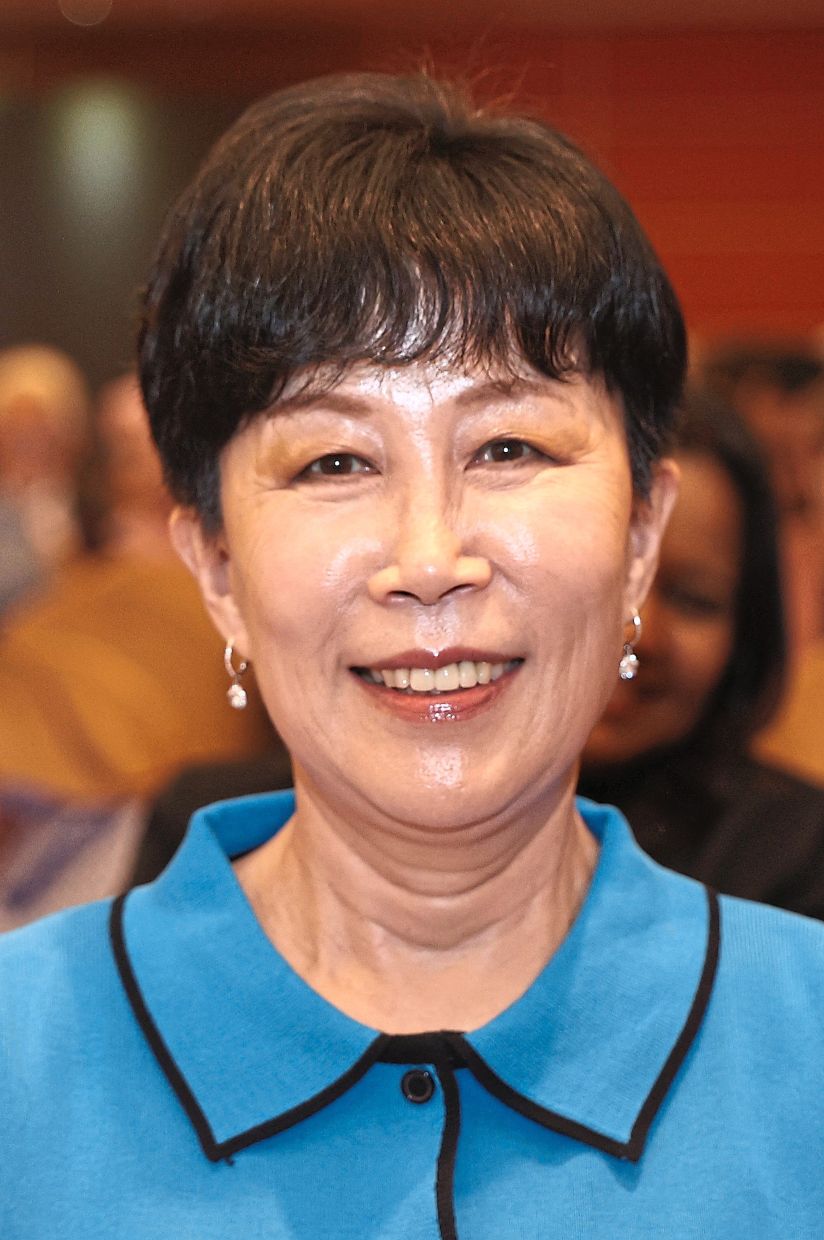 A Long March-2F rocket, carrying the Shenzhou-19 spacecraft and a crew of three astronauts, lifts off from the Jiuquan Satellite Launch Centre in the Gobi Desert, northwest China. — TNS
A Long March-2F rocket, carrying the Shenzhou-19 spacecraft and a crew of three astronauts, lifts off from the Jiuquan Satellite Launch Centre in the Gobi Desert, northwest China. — TNS“If you really want to beat the Chinese, give Nasa the funding and stability it needs. You’re not going to win if every week there’s a new direction, a new budget, a new administrator.” -by G. Scott,Hubbard
EARLY in his first term, US President Donald Trump held a modest ceremony directing Nasa to return humans to the moon for the first time in half a century – a lofty goal with no clear road map.Veterans of the space community were torn between excitement and concern.Was Trump offering a windfall to aerospace contractors or charting a genuine strategic vision to reclaim American leadership in space?The idea wasn’t new.President George W. Bush had proposed a similar plan in 2004, only for Barack Obama to abandon it six years later.
For decades, Nasa wrestled with the question of whether to return to the moon or leap straight to Mars – each path promising scientific glory but demanding vast, steady funding from a fickle Congress.
Eight years on, that debate is over.
Trump’s revived lunar policy has ignited a new space race – this time with China – and the countdown is already on.
Both nations are targeting manned lunar landings by 2029, a symbolic year marking the end of Trump’s presidency and the 80th anniversary of the People’s Republic of China.
But unlike the Cold War’s first space race, this contest is not about planting flags. It’s about who gets to stay.
Washington’s Artemis programme aims to establish a permanent base to test life beyond Earth.
Beijing has similar ambitions – and both are zeroing in on the same spot: the moon’s South Pole, where peaks of eternal sunlight border deep, shadowed craters believed to contain frozen water.
Whichever nation establishes a foothold first could claim the region – and the resources – for itself.
“The bottom line is, yes, it’s doable,” said G. Scott Hubbard, a veteran of human space exploration and Nasa’s first “Mars czar”.
“But it’ll take intense effort and proper funding. It’s not inconceivable – but it’s a stretch.”
Nasa officials fear that funding cuts and private-sector delays could hand China an early lead.
The Trump administration has proposed slashing the agency’s research budget by nearly half, fuelling uncertainty within Nasa at a critical moment.
“There’s too much uncertainty,” said one official. “Inside headquarters, everyone’s walking on eggshells.”
In the 1960s, the US government poured 4.4% of GDP into Nasa to win the space race.
Today, the share is less than 0.5%.
White House officials insist Trump is committed to making “American leadership in space great again”.
Acting Nasa administrator and Transportation Secretary Sean Duffy said: “Being first and beating China matters because it sets the rules of the road. Those who lead in space lead on Earth.”
Beijing, meanwhile, is steadily ticking off milestones. It recently launched its Lanyue lander – built to carry two taikonauts (China’s term for astronauts) – validating its take-off and landing systems, according to state media.
Two tests of its new Long March 10 super-heavy rocket were declared “complete successes” by the China Manned Space Agency.
“They’re progressing on every key piece they’ll need,” said Dean Cheng, a China expert at the US Institute of Peace. “They’ve built a new rocket, a lunar lander and they’re moving faster than anyone expected.”
China has accelerated its timeline from 2035 to 2029 and plans to start building a joint lunar research base with Russia by 2030, most likely at the South Pole.
“There’s room for two powers – but not without coordination,” warned Thomas Gonzalez Roberts, a space policy scholar at Georgia Tech. “Competition for the same landing sites could turn risky.”
China’s goal, experts say, is to arrive first and establish broad control – securing access routes, communications, dig sites and even a nuclear reactor to power its base.
Nasa’s own plans depend on Elon Musk’s Starship rocket – a giant, reusable launcher built by SpaceX and central to Trump’s Artemis vision.
But repeated test failures have put the schedule in jeopardy.
“Starship has yet to reach orbit,” Hubbard said. “And once it does, it’ll need to prove it can transfer cryogenic fuel in space – something never done before. Doing all that within two years is a real stretch.”
Delays have already pushed Artemis III, the first planned lunar landing, towards the end of Trump’s term.
Artemis II – a manned orbit around the moon – is expected early next year after design flaws in Lockheed Martin’s Orion capsule were fixed.
Trump’s aides fear Beijing could deploy a nuclear reactor on the moon by 2029, allowing it to declare a “keep-out zone” and block American operations nearby.
Duffy has ordered Nasa to prepare a competing US reactor mission by the same year.
Yet, uncertainty persists.
Trump has not nominated a permanent Nasa administrator and the White House declined to identify who is overseeing the lunar effort.
Even Trump’s broader space agenda is shaky.
His administration has proposed cancelling funding for Nasa’s Mars Sample Return mission, a cornerstone of planetary science, despite evidence that the Red Planet once supported life.
Setbacks are part of the space game, but China’s pace has turned them into a liability.
If Beijing lands first, it would not just be a symbolic victory – it could reshape power dynamics on Earth.
“I’ve been on the inside,” Hubbard said. “You waste enormous time fighting budget battles.
“If you really want to beat the Chinese, give Nasa the funding and stability it needs. You’re not going to win if every week there’s a new direction, a new budget, a new administrator.”
Then he paused. “And China may still win,” he said. “That would be another claim that they’re the dominant power in the world.” — Los Angeles Times/TNS
Relates posts:
Do not misread China, Victor Gao on How the US Misunderstands China













